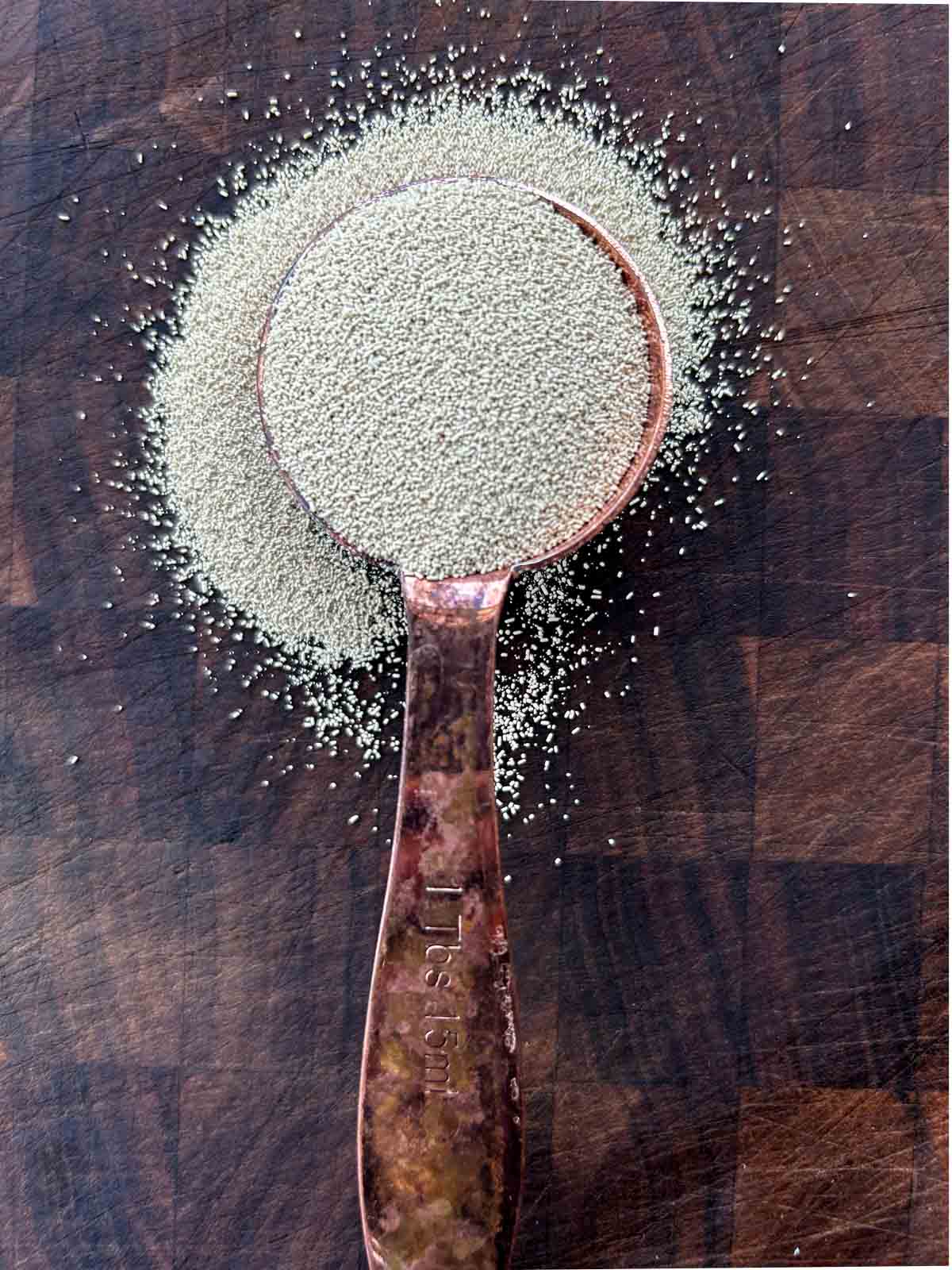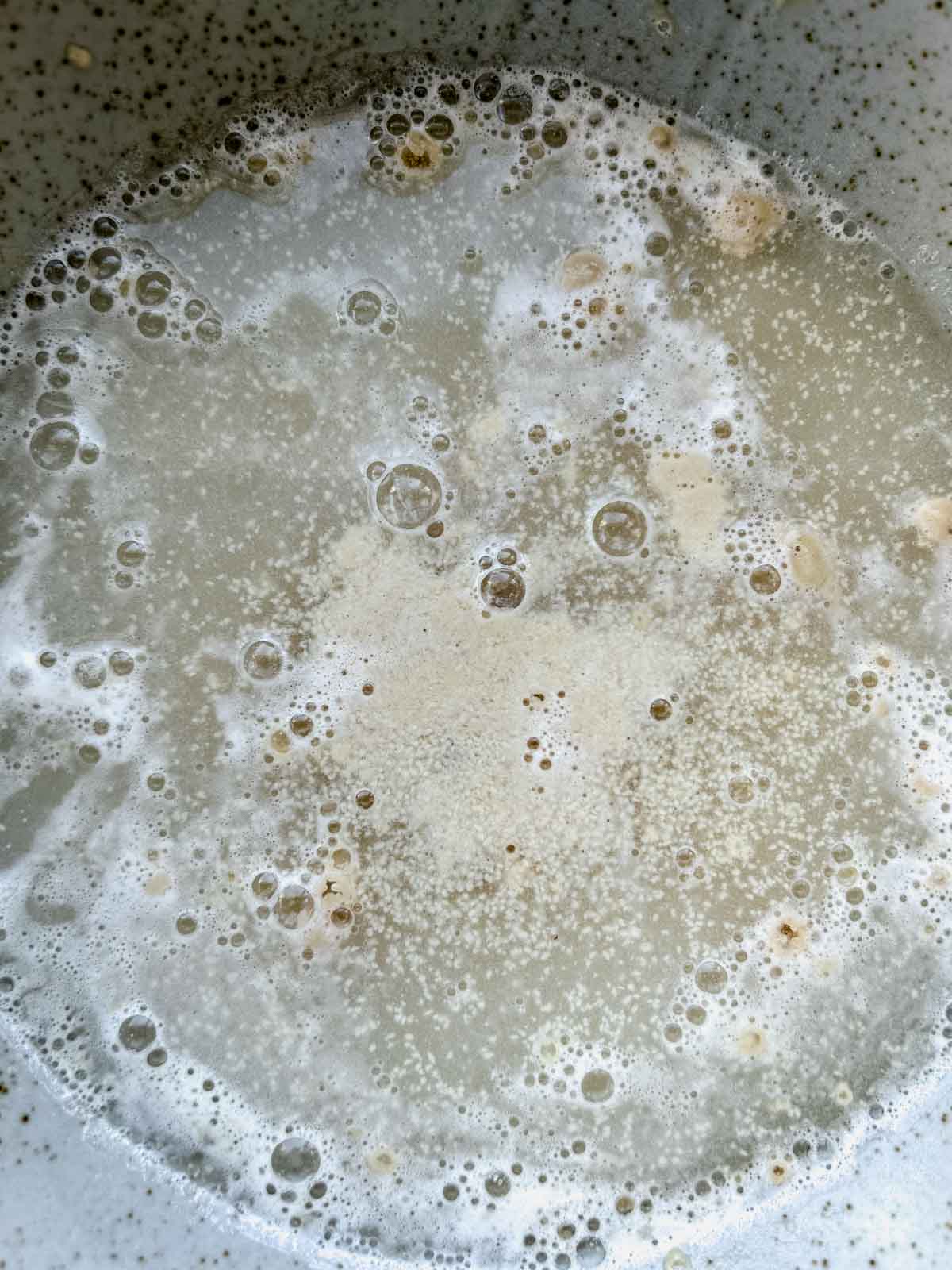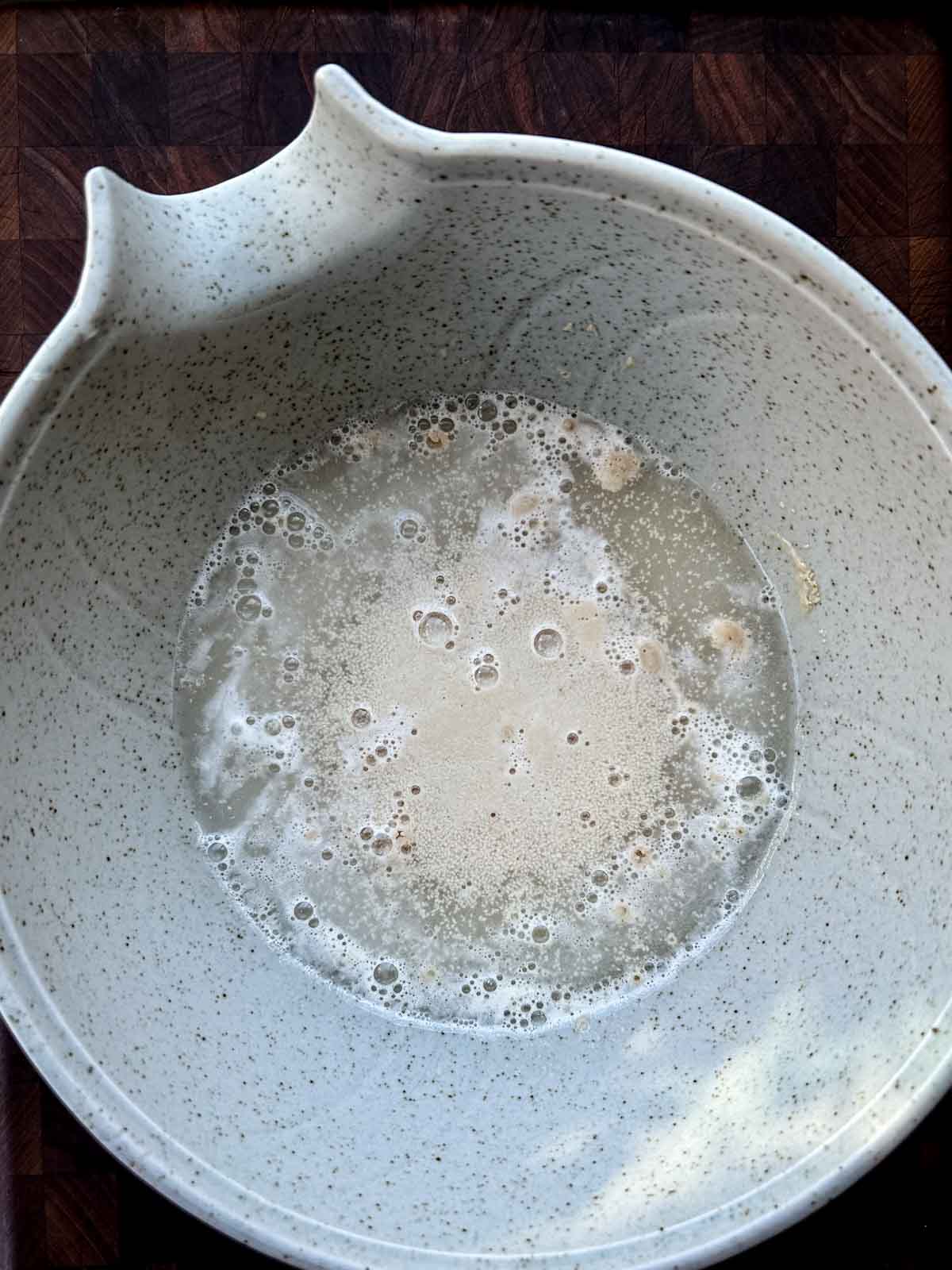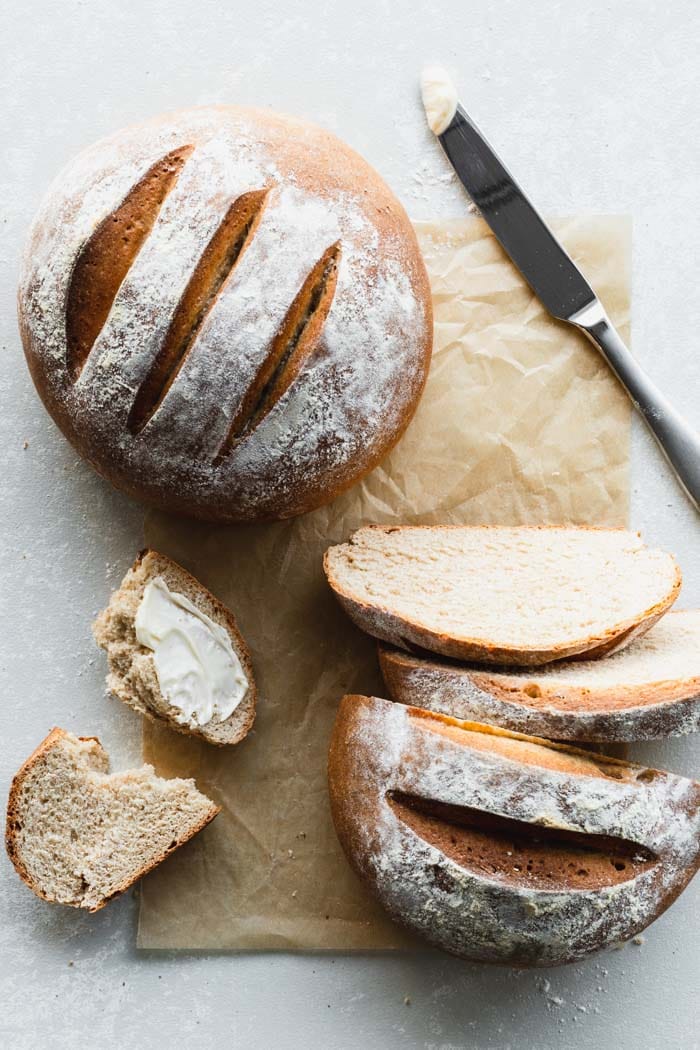If you are new to yeast bread baking, you may be wondering what the difference is between the types of yeast for bread. Today’s short tutorial vividly explains what types of bread yeast you can use for baking at home.

Don’t tell flour we said so, but when it comes to baking homemade bread, there’s only one star of the show – yeast! In this tutorial you will learn what baker’s yeast is, where to buy it, how to store it and most importantly, the different types of baker’s yeast.
What Are the Different Types of Yeast for Baking?
dry yeast
- Larger granules that need to be dissolved in water or made to flower before use
- The water needs to be lukewarm (about 110 degrees Fahrenheit) to activate the yeast from its dormant state
- If the water is below 105 degrees the yeast will not activate and if the water is above 115 degrees it could kill the yeast and the bread won’t rise
- After mixing with lukewarm water, it usually takes about 5 minutes to form frothy bubbles
- These bubbles indicate the yeast is ready to be added to the rest of the ingredients
instant yeast
- Sometimes called “bread machine yeast”.
- Smaller granules that can be mixed directly into the dry ingredients
- Because of these finer particles, it dissolves faster and activates faster
- It can be used 1:1 in recipes that call for active dry yeast (and will likely rise faster)
Rapid Rise or Quick Rise yeast
- Very similar to instant yeast with smaller grains that don’t need to be dissolved in water
- Enzymes and other additives have been added to make the dough rise faster
- With this yeast it is possible to shape the dough right after kneading and to skip the first rising
Fresh yeast
- Also called compressed yeast or cake yeast
- Preferred in gastronomy and professional bakers
- Comes in small foil wrapped square cakes and can be found in the refrigerated section of the grocery store and has a shorter shelf life than the dry yeasts mentioned above
- It has a crumbly, spongy texture and needs to be weighed for baking as it is not easily measured by volume
- Must be softened in warm water before use
- Best suited for bread that requires long rising times
- If you have a recipe that calls for fresh yeast but only has instant yeast, use 1/3 the weight. Source.
wild yeast
- Wild yeast is an invisible atmospheric yeast that surrounds us everywhere
- Sourdough bread is made with an appetizer that is made from wild yeast
- You can make your own sourdough starter at home without commercially available baker’s yeast
- A sourdough starter takes about 6 or 7 days to make and requires only flour, water, and atmospheric or wild yeast
- Learn how to prepare an appetizer here
- You can also buy sourdough starters or, like me, grab a little leftover sourdough from a baking friend
- Wild yeast varies by location and is said to impart terroir, or a local flavor, to baked goods
what is baker’s yeast?
- It is a microscopic fungus… similar to an edible mushroom
- The scientific name is really long but basically means sugar-eating fungus
- yeast cells Digest sugar to grow
- This Growth is called fermentation and produces carbon dioxide gas and ethyl alcoholwhich are transferred to the dough
- the Gas is trapped in the elastic and stretchy dough that causes the dough to puff or rise and the ethyl alcohol gives the bread its typical flavor and aroma
- The resulting product is called a yeast bread
Where can you buy baker’s yeast
Most dry yeast are shelf stable, having been freeze-dried to quiescent state (but don’t forget to check the expiration date). sold in small envelopes or jars. It’s usually in the grocery store’s baking aisle near the baking soda and baking soda. Fresh yeast, on the other hand, is usually wrapped in paper or foil and can be found in the refrigerated section.
Visit the Red Star Yeast product page for more information.
How to store baker’s yeast
Yeast can spoil, so make sure to store it properly.
Keep fresh yeast refrigerated in original packaging or parchment and in a resealable container to prevent moisture loss for up to 1 month.
Keep all other yeasts including instant yeast, rapid riser yeast, rapid riser yeast and active dry yeast in the refrigerator or freezer up to 1 year. Store in sealed original packaging or in an airtight container. Stay dry.

FAQs and pro tips for baking with yeast
No, you do not need to test or rehydrate instant yeast before using it. It can be mixed into the dough without first proofing. However, we recommend testing a small amount of the yeast used to make sure it’s still alive. To do this, follow the steps for testing your yeast.
Yeast is a living organism and can die if it is too old or has not been stored properly. To test the yeast and make sure it’s still viable, add it to warm water with a little sugar and within a few minutes a bubbly foam should appear on the surface. If you see this foam, the yeast is ready.
After mixing the dough, you have to give the yeast time to do its job. This is called letting the dough rise and rise. Most recipes call for two rise times…the first right after mixing, and the second after you’ve formed the dough.

Our 3 most popular yeast bread recipes
About the author
Stephanie Olsen
Stephanie Olson worked in television production and advertising before moving to New England from Los Angeles. She attended culinary school in Connecticut and has since worked as a pastry chef, recipe tester and food stylist. Stephanie grew up in Lubbock, Texas and graduated from the University of Texas at Austin. She currently resides in Vermont with her husband and two teenage daughters.

